5 Key Takeaways From The 2015 National Farm Machinery Show
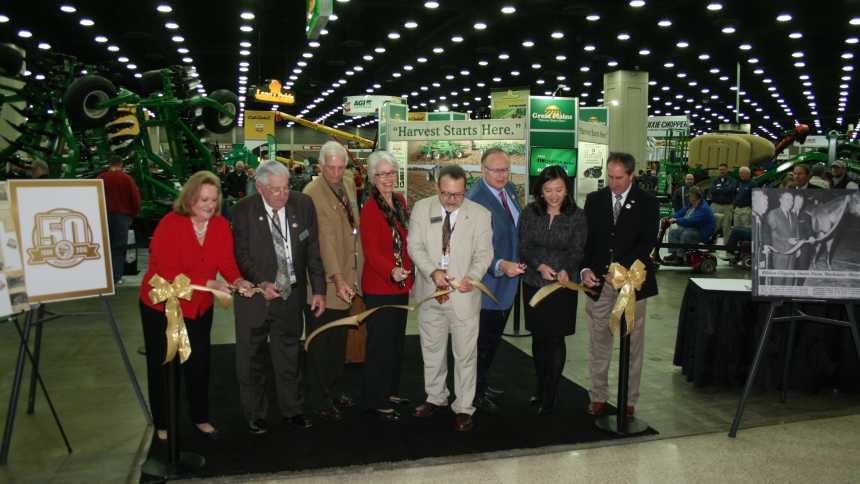
A ribbon cutting ceremony kicked off the 50th anniversary of the National Farm Machinery Show in Louisville, KY, on February 11, 2015.
The National Farm Machinery Show (NFMS) celebrated its 50th anniversary February 11-14 in Louisville, KY. The milestone was showcased throughout the annual event at the Kentucky Exposition Center (KEC), which attracted about 300,000 people from all over the world. Touted as the largest indoor farm show in the U.S., the NFMS typically features about 850 exhibitors and 1.2 million square feet of floor space. There is so much to see and do — and so much ground to cover — during the four-day event, a comfortable pair of walking shoes is an absolute must.
For many attendees, the highlight of the show is the nationally recognized Championship Tractor Pull held in the KEC’s Freedom Hall. Witnessing trucks and tractors battle it out with engine-roaring excitement is fun for the whole family. And while I appreciate the high-octane intensity as much as the next guy, there were several other interesting takeaways from the 2015 show. Thus, here are five key observations I made after spending two solid days at NFMS:
1. Next Generation Is In Full Force
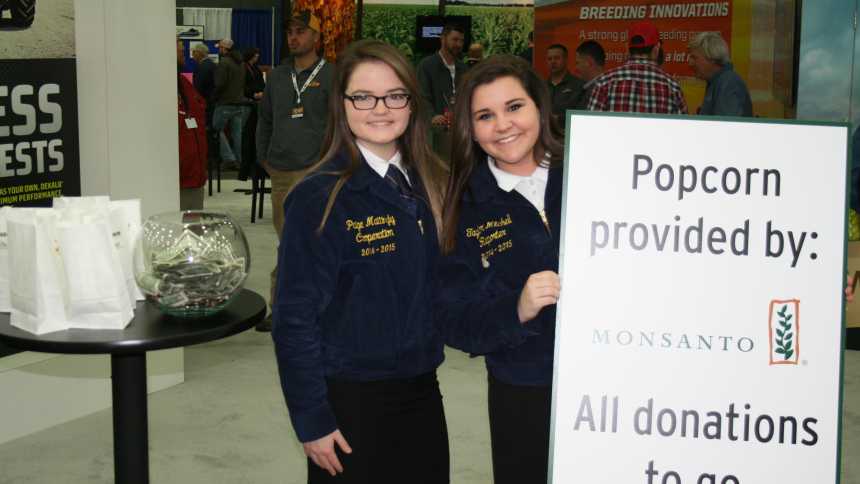
FFA members helped out at the Monsanto booth at the 2015 National Farm Machinery Show.
One of the first things I noticed at the NFMS is the number of young people in attendance. Busloads upon busloads of students converged upon the KEC looking for more than just free walking sticks and other swag. They also visited exhibitors, attended seminars and learned about agriculture. Their overall thirst for knowledge was inspiring. And youth wasn’t just being served by attendees. Many exhibitors were represented by young employees who were enthusiastic about talking with visitors about their company’s latest offerings. It was quite apparent in Louisville that the next generation of ag professionals is embracing the industry.
2. More Than Just Farm Equipment
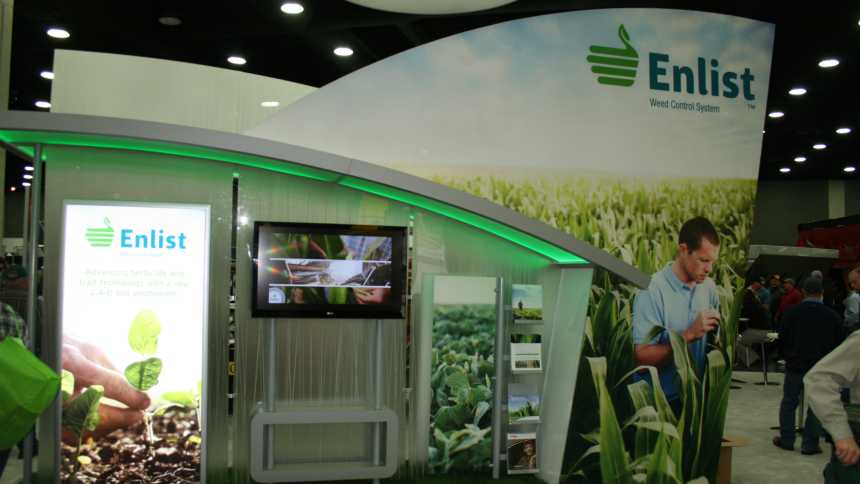
Showcasing its newly approved Enlist Weed Control System, Dow AgroSciences was one of many crop input companies that displayed their latest offerings in seed, crop protection products and more at the 2015 National Farm Machinery Show.
The NFMS has a reputation for being all about the equipment. And rightfully so. Nearly every major line of farming equipment was on display, allowing attendees to compare products side by side. But just as the agricultural industry has evolved over the last 50 years, so too has the NFMS. Equally present at the show was the crop input side of farming. From Bayer CropScience to Syngenta Crop Protection, the latest in seed and crop protection technology dotted the exhibit halls of the NFMS. In addition, precision agriculture companies — the solution providers who help tie the equipment and crop input technology together — also made their presence known at the show. From greater accuracy and more compatibility with autosteer systems, to the latest in multispectral imagery, the NFMS truly showcases the most complete selection of cutting edge agricultural products, equipment and services in the farming industry.
3. Technology Is Simpler To Use
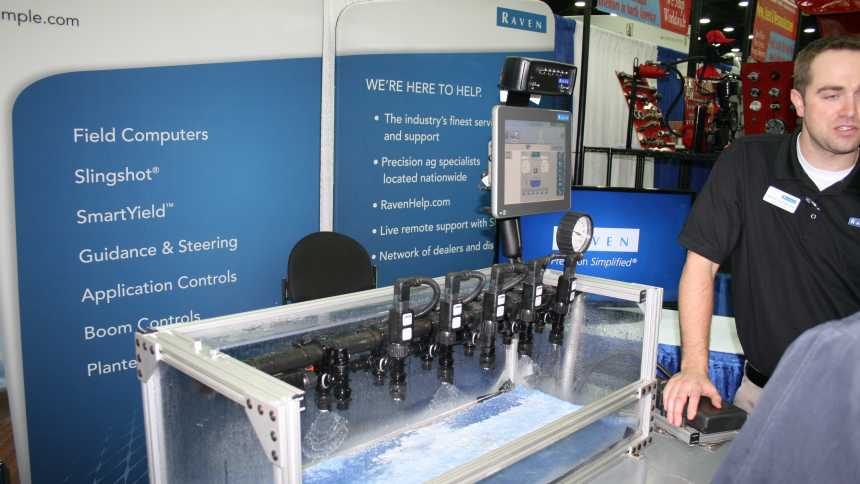
Raven’s new Hawkeye Nozzle Control System is simple to install and calibrate.
While visiting with dozens of exhibitors during the show, one of the recurring themes with farming technology was simplicity. Even as the technology becomes more advanced, manufacturers are still developing farming and application equipment that is easy to use. “While accuracy, efficiency and speed will always be very important, farmers want a piece of equipment that is simple to operate,” said one exhibitor. This message was particularly loud and clear at the exhibits of many of the precision ag companies. For instance, in addition to helping applicators reduce spray drift with a more consistent spray pattern and a more accurate droplet size, Raven’s new Hawkeye Nozzle Control System is simple to install and calibrate.
4. Smaller Application Equipment Trend
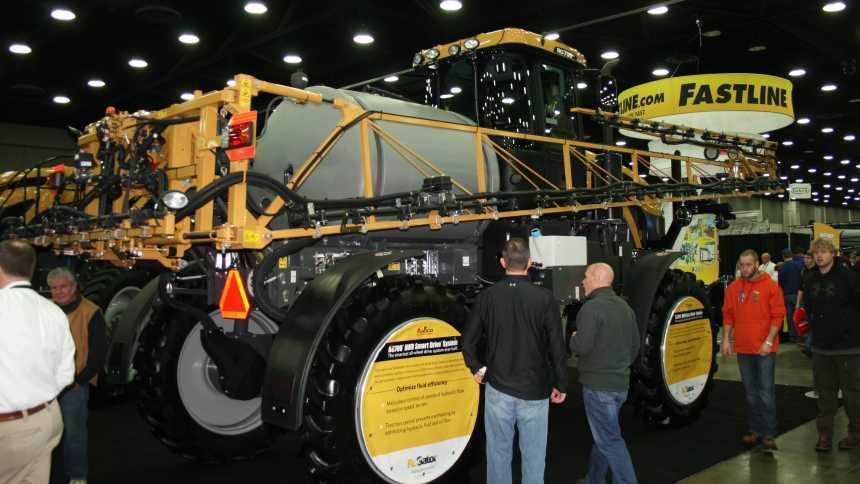
Many sprayer manufacturers are offering smaller units, such as AGCO’s RG700 on display at the 2015 National Farm Machinery Show.
When I first stepped into one of the main halls of the Kentucky Exposition Center, I couldn’t help but be overwhelmed by the massive size of some of the farming equipment. I can only imagine what set up (and tear down) day is like. Organized chaos, I’d presume. But not all equipment is trending larger, especially on the application side. For example, many of the newer self-propelled sprayers from AGCO Corp., Case IH, GVM and John Deere feature smaller product tanks and are lighter weight than previous models. The smaller machines have a lighter footprint, explained one exhibitor, because they are carrying fewer gallons of product and less fuel, and thus compaction can be greatly reduced. These units are proving extremely valuable for owner-operators with smaller fields, as well as areas of the country that typically have wet fields.
5. Mobile Technology Is Everywhere
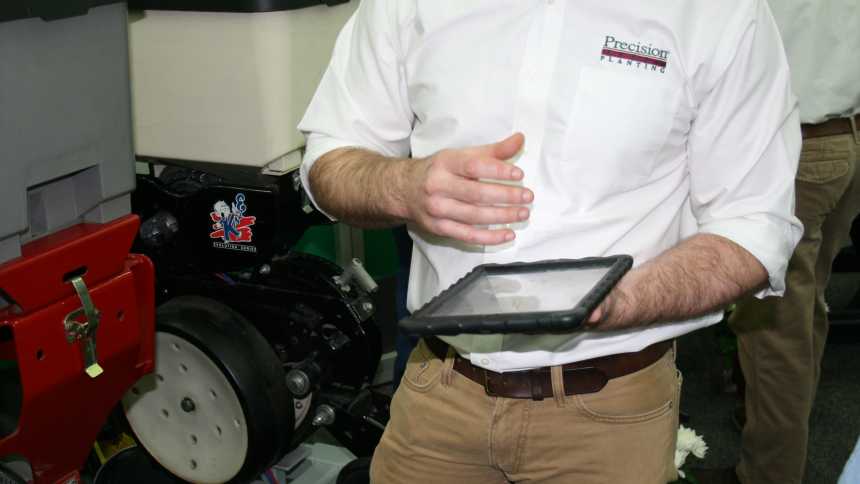
Tablets and other various mobile devices were ubiquitous throughout the 2015 National Farm Machinery Show.
Finally, mobile technology was everywhere at the 2015 NFMS. Whether it was attendees using their smartphones to navigate the maize-like exhibit halls via the NFMS mobile app, or exhibitors demonstrating the latest technology to visitors, mobile devices were as ubiquitous as the fried food concession stands. In fact, one educational session even took this subject a step further. The presentation, titled “Farming By Tablet,” examined how cloud-based systems meant a farmer could actually run his business from a tablet computer.






